Introduction – ASUS RAMPAGE V EXTREME
X99 has been around a bit now and the next board to hit our bench is what we have here today and it is no joke as it is the Rampage V Extreme or what many hold as the benchmark for every other board in regards to top performance. This kind of legacy has been earned over years of having boards at the top rung of performance and at the bleeding edge of new features. Now lets hop in and see if the new Rampage V Extreme holds true to its lineage.
The Rampage V Extreme has a MSRP of $473.99 available on Newegg at the time of writing and this places it at the very top as far as pricing with only two boards above it being the ASRock Extreme 11 and the ASUS WS model board so the extreme better bring some serious capability to the table to justify this cost as the next board behind it is the XPOWER AC from MSI which is almost 100 dollars less and performed very well in our testing.
Key Features
First up is the main feature overview directly from ASUS’ own press deck. One think about the Extreme model is that it always is pushing the bleeding edge in regards to extreme gaming features. Rampage V Extreme is no exception here and has plenty of the popular features and even some major improvements which we will dig into below.
OC Socket
Here is something which has been met with alot of scrutiny recently as ASUS offers a socket design with more pin contacts and claims it can offer better OC performance due to this but being as I do not have the pinout for the CPU to see where these pins connect or what the function is it is counted as simple marketing speak until we get to the testing.
Memory Performance Boost!
ASUS has been cultivating the T Topology for memory for a few chipset generations now and I think about now is when we are gonna see dividends from this as previously the technology was not up to the point to where you could see benefits but as I have seen a swing on X99 where board layout actually can affect performance to a measurable scale this may just turn the tide in ASUS’ favor.
Xsocket
The X-Socket II feature is something we had experience with before on the X79 based ROG boards where you can swap out the stock threaded socket for a 1366 style socket which makes mounting LN2 containers or other coolers much easier. The same applies here as now you can pass through the mounting mechanism thru the board holes for maximum compatibility and all it requires is the included star wrench and a few minutes time to swap the backplates.
Cache Bus Speed Improvements
ASUS claims that due to the OC Socket design you can achieve much stronger Cache or uncore frequencies which should give better performance in some tests as the uncore frequency directly correlates to the supporting bus performance. Once again in the overclocking section I plan to go quite in depth testing just how well the board overclocks with this new feature.
Safe Boot and Retry Buttons
This is one of the areas where I feel ASUS really shines on the Extreme level boards and that is OC centric features. things such as the safe boot and retry buttons both of which allow you to quickly recover from bad settings or no post at the press of a button whereas other boards you may fucc with it for a minute or so to get it booting again, anyone who has ever benched LN2 knows that seconds count when a rig starts to frost over, so that minute can cost you hardware or at the very least the run.
GPU Lane Allocations
With X99 there are now two lane allocations as Intel released bothe 40 lane chips and a sky offering only 28 lanes, now it takes simple math to know that there are limitations as to lanes that can be allocated for a cut down 28 lane CPU. Now as you consider that its really cool because while ASUS provided this document they also silk screened it right onto the back of the board so that you always have a reference although that will be admittedly a bit tough to see if the board is installed in a system/
DirectCU Thermal Design
ASUS took a bit of the magic they have learned in their GPU game to spice up the power circuit cooling for the Extreme board and as you can see it has a direct touch heatpipe design and offer a huge surface area to dissipate heat away from the critical components.
Mini PCIe / mSATA Combo Card
ASUS has a whole host of high speed connectivity starting with the SATA Express which they have two, then you have the M.2 which supports up to 110mm drives for maximum compatibility. And a new entrant is the WiFi entry which is a 3T3R or 3 connection antennae design to allow maximum range and performance from the WiFi AC controller. This allows for a WiFi AC 1300Mb/s theorhetical data rate although this will depend greatly on teh router/access point you are connecting to and range.
Extreme Engine DIGI+ IV
ASUS has been known for some time for their DIGI+ solutions and on the ROG boards they now have the new Extreme Engine DIGI+ IV designs.
The Extreme engine DIGI+ IV Design is the next step in the design and methodology for the ASUS Digital power supply for the critical onboard components.
the system starts off with a custom DIGI+ controller then new PowIRStage single piece drivers then to new microfine inductors/chokes and terminating into the superior grade 10k black caps.
All of these components combine to make for a super strong power solution which should stand up to the heavy power demands we have seen from the new Haswell-E based CPUs.
Truevolt USB
ASUS is employing something we saw on the MSI and Gigabyte offerings we looked at recently which tells me there must have been some major feedback on the USB power function of their boards. All manufacturers have been beefing up their USB power supplies on this go around and I can only assume there was something that caused everyone to jump on this transition.
SupremeFX Audio solution
The SupremeFX audio solution is something that I can no longer quantify as a unit which means a single or defining style which now SupremeFX carries multiple designs depending on the board. I guess if anything I can call this the newest iteration of the SupremeFX Implementation which carries similar design styling and even some similar components as previous Generations but there have been some upgrades since then. Things such as the ELNA caps which much like previous gen applications of the SupremeFX designs offers a much fuller sound in your gaming environment. The ability to manually switch the Sonic Soundstange for special gaming profiles Also the SupremeFX Codec shielding, Op Amp and even the Red Line shielding are all in place to offer the best possible audio experience for extreme gamers looking for the very best they can get.
Sonic Radar
Sonic Radar is a very interesting development in that it offers an on screen overlay to show where noises are coming from which can offer you a competitive advantage in FPS games or other titles as gunshots or foot steps now not only can be heard but seen to allow better strategic positioning against an oncoming enemy force.
The newest Version Sonic Radar II has been improved for wider compatibility and even game per game setup to ensure the system functions the way you want it.
Intel Internet
ASUS has always prided themselves on having the best of the best and their choice for Intel Gigabit Network controllers definitely cannot be faulted as Intel have proven to be super efficient and plenty powerful for both major productivity and gaming.
GAMEFIRST II
ASUS has pushed the Gamefirst technology even further with its cFos software which now offers a EZ mode to allow even easier tweaking and adjust ability for all end users to increase online gameplay performance. The Gamefirst III technology builds off of the ability to shape the network traffic to better control throughput and packet priority to ensure the program that needs maximum speed and reduced latency such as streaming HD video or simply online gaming is all at your fingertips.
KeyBot
ASUS has introduced a totally new feature with the name KeyBot, this allows a keyboard that is plugged into the KeyBot port to now be assigned macro combinations on any keyboard eliminating the need for a special keyboard with onboard memory to have macro capability. This is very interesting as I see some huge benefits to this as now any cheap USB keyboard can have full macro capability like a more expensive unit, but at the same time since this is the first iteration it will take some extensive testing to see exactly hwo well it works and what are the limitations of the functionality based on the keyboard used among a whole host of other factors.
Besides Macro gaming setups you can even setup specific keys to boot your PC into special modes such as CPU Level up or XMP setting and etc.
Included Software
ASUS always prides themselves on their included software suite which is not bad as it includes some very capable things such as their AISuite Tuning software which has come a long way over the years. Free Kapersky Antivirus which is a very effective and lightweight AV, and Daemon Tools Pro which has its own awesome feature set. Normally im not one to make a big deal about included software but in this case it really is an added value part for the board.
Gamer’s Guardian
ASUS has another new section called Gamers Guardian which highlights special features designed to protect your system both from physical damage along with electrical. Things such as 1 Sided DIMM slots to allow easier installation and removal of DIMMS. ESD Guards to avoid static damage and even Q Slot to allow effortless graphics card swapping and securing in the slot. the dual backplates is more a flexibility option and I dotn know if it qualifies as a gamer guardian but if you have a CPU waterblock that mounts 1366 pass thru but not 2011 then it would apply so it gets a pass from me as well.
OC PANEL
The ROG OC PANEL is the next new thing as we saw the OCKey introduced on the Rampage IV Extreme then on the Maximus V Extreme, now you see the next step in the evolution of ultimate overclocking peripherals.
As you can see the OC PANEL resembles a standard stand up K Type thermometer which is very familiar to enthusiasts overclockers. however this device does much more than just read thermals, as it connects directly to a special header on all ROG based boards for Z87 to allow full monitoring and hardware level control of the board to allow no overhead overclocking from the remote device.
One thing worth noting is that the remote fan and overclocking controls work with just the internal header connection, but if you want to get the advanced functionality of the extra overclocking devices such as GPU hotwire and all of the feature built under the cover than you are advised to connect a SATA power connector for the extended functionality which we will look at below.
Subzero Sense
The Subzero Sense feature is another that we have seen previously on the Rampage IV Extreme and is based solely on the needs of an extreme benchmarking enthusiast. The Subzero Sense feature is a collection of 2 K type probe connections on a block found on the side of the OC PANEL. These are used to keep track of the pot or LN2 container temperature to ensure your running within desired temps to avoid cold bugs or issues. Normally, when running LN2 or any other kind of sub ambient cooling you would need a external thermometer of good quality to ensure you get very accurate subzero temperature readings. With the Subzero Sense feature you now have 2 ports to which you can install K probe connections to monitor 2 different devices temperatures which means you dont need to spend the cash for those expensive thermometers.
Testing of the subzero sense connection found it to be within a single degree of a expensive Fluke K type thermometer at -170C which means that controlling loaded temps during a benchmark run can be done efficiently and without the extra expense.
VGA Hotwire
The VGA Hotwire feature is a unique one as it allows for hardware level voltage modifications to your graphics cards. Previously in order to have hardware level control over your GPU voltage it would require specific trimmers of the correct resistance or something over then soldering it to correct points on the card so that you could fool the VRM of the card into giving it more voltage as needed for extreme overclocks. Well ASUS knows what its users need so they went ahead and integrated pin headers on the OC PANEL so that the wires can be soldered onto the card then plugged directly into the OC PANEL for hardware level voltage modification and monitoring without fumbling with external trimming devices.
One thing worth noting is that the small lower cover needs to be opened and removed from the OC PANEL in order to expose the multiple extreme overclocking tools and connections hidden below. We will look more at this in the overview images of the OC PANEL device directly.
Slow Mode and Pause Switches
These switches allow for quick interaction to slow down CPU speed to avoid crashing along with pause switches to be able to pause system mid benchmark should any sort of situation come into play such as the need to bring temps up to avoid bugging or anything. These two switches can make huge differences to the performance under extreme benchmark scenarios especially when otherwise you could run into a cold bug which will end your benchmark run and ultimately be very maddening.
4 Extra PWM Fan headers
Below the cover you will find four extra PWM fan headers that can be used to help blow away condensation or keep airflow over your rig during bench sessions since most areas on the board will be covered or not very accessible in those scenarios.
Main interface
After looking at all of the components available under the small cover theer are many main features built into the OC PANEL which I believe will be more commonly used. As you may have noticed the booard comes bundled with a 5.25″ adapter that allows easy mounting of the OC PANEL where only the small face is visible and this allows access to the power button, CPU fan speed control button, mode switch and CPU level up switch all designed to offer hardware level control at your fingertips without the need to escape to the BIOS.
ROG RAMDisk
ASUS has really jumped in deep with this one as some time ago I can remember talking to the ASUS Rep about RAMDisk performance and possibilities for Motherboard manufacturers to bundle it. Well now is that time, and ASUS of course is one of the teams leading the charge. Many may quickly note that in many cases especially previously RAMDisk was simply not feasible due to the low density and high cost to get a decent amount of usable Ram. Recently higher density kits have become much more affordable meaning that now even 32GB 4 DIMM kits are reasonable accessible by common users which means since most systems rarely use over 6-8GB max means you can have a quite sizable RAMDisk ready for super high speed operation for some transfer intensive tasks.
When Creating a RAMDisk there are many things to consider such as possible size limitations, and what data will you keep there? Well a RAMDisk is a huge measure faster than an SSD up to 10X faster in some cases and with RAM it is designed to constantly write and copy data so saving files that are constantly performing write operations can reduce wear on your SSD as well. With this in mind it is smart to look into which cache files are constantly writing, and find a way to migrate those to the RAMDisk. These will not only operate faster but if they are constantly being updated and written to it can save a ton of writes on your SSD. This is of huge importance for SSD longevity, as there are a limited number of write cycles on a SSD, and eliminating unnecessary write operations can actually have a very good result for the durability of your SSD.
The ROG RAMDisk software is designed with a easy to use UI and as you can see there is no size limitation so you can make a RAMDisk as big as your free memory that is available. This is also awesome as DIMMs continue to increase density the size of RAMDisk can grow as well.
Another cool feature has to do with creating junctions because while loading a whole game on RAMDisk may seem like a good idea it is often unnecessary, so instead let the software create junctions or redirects to the RAMDisk for specific large files or IO heavy files such as maps or large texture files which would normally slow down loads or texture refreshes by having it sitting in the ram.
There are some things you need to know which is that when a system is powered off the Ram is flushed so as the software may hold critical data for you it will need to dump an image of the RAMDisk on to your drive so that next time you start up it can load that image into the RAMDisk and get you back to where you left off. This is not a huge issue but with larger RAMDisk volumes this can add a delay to startup and shutdown operations as time is needed to dump the RAMDisk onto the physical disk during shutdown, or to pull it back on to memory during startup. Expect slightly longer bootup times to perform these duties. All in all that is a marginal expense with the performance improvement you can see from this implementation.
SSD Secure Erase
ASUS has performed a lot of testing when it comes to a high performance machine. One thing that has been noticed is that as SSDs have matured we have seen that over time performance will degrade and drives basically fill up some and rewrite data and basically just start to get junked up and performance starts to fall off. Well the solution has been found to perform a secure erase which writes zeros to the whole disk creating an entirely new fresh disk data area. This is a great solution but the problem is that many users do not know how to burn the Linux live CD or even more how to navigate the many options to perform the secure erase. ASUS once again offers a unique solution via a integrated UEFI software to secure erase an SSD to restore it to like new performance.
Here you can see the standard falloff of performance simulated on the chart and how the secure erase places it in a like new state. with that considered we know it is a necessary task for optimal performance but with the ROG solution its as simple as going into the BIOS with no extra tools required or software to buy. You get this free with your purchase of the ASUS ROG board.
USB BIOS Flashback
ASUS offers the BIOS Flashback utility which is actually a multi-facet tool and has many capabilities which some may not be aware of. we have had many times where a motherboard did not support a CPU and a frantic search for a supported CPU just to flash the BIOS (ex. Gulftown CPU support on X58). ASUS has eliminated the worry of these kinds of issues by allowing the BIOS flashback procedure which does not require a CPU or memory to flash the BIOS. All that is needed in order to flash the BIOS is to have the desired firmware ROM file on a USB thumb drive and insert that into the ROG connect USB port.
Depressing the ROG Connect button for 5 seconds will start a flashing LED which indicates the firmware is being updated and once the update is complete the flashing will stop. It really is that easy and ensures no matter the condition the firmware can be flashed even if the newest CPU is not supported without the previously mentioned hunt for a compatible CPU.
This may seem like an odd feature but many may buy the newest and greatest CPU on the market while the board could have been shipped with the older firmware which in most cases would leave the user stuck without an option. We have found this useful quite a few times when after running a LN2 cooled system in unstable conditions, a BIOS had corrupted. With the BIOS flashback it was remedied as quickly as we could copy the ROM file from our laptop to the flash drive and get it flashing.
New UEFI BIOS
The X99 boards took all of the new features we saw recently on the Z97 board including the new interface and placed it into the X99 interface to give it a nice sleek and updated look and feel. all of the options you have come to love from the ASUS UEFI is there it now just has a more slick and refined look.
Review Overview
Performance - 9
Value - 8.5
Quality - 10
Features - 10
Innovation - 10
9.5
The ASUS Rampage V Extreme is a near perfect board. Its a amazing mix of awesome for those daring to pay the price and take the reins!
 Bjorn3D.com Bjorn3d.com – Satisfying Your Daily Tech Cravings Since 1996
Bjorn3D.com Bjorn3d.com – Satisfying Your Daily Tech Cravings Since 1996
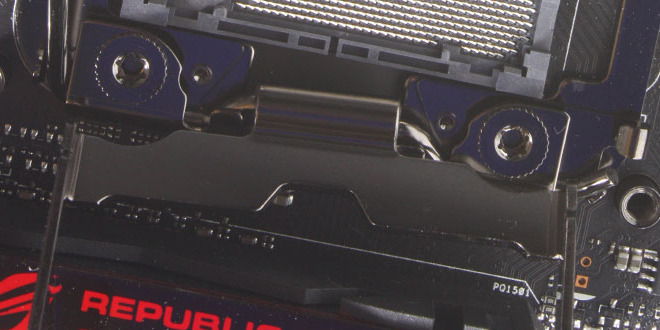

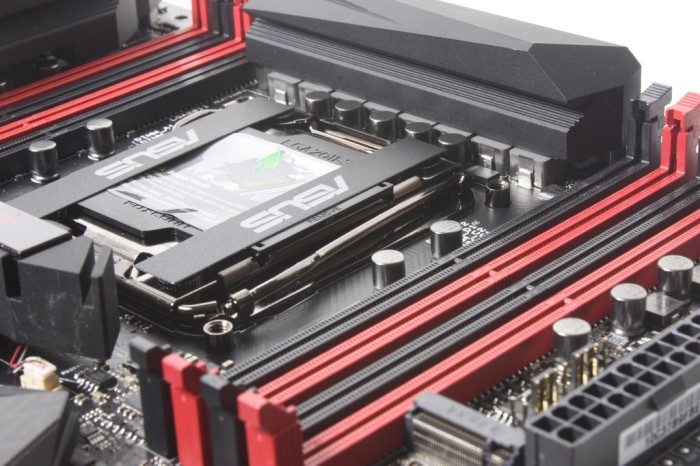
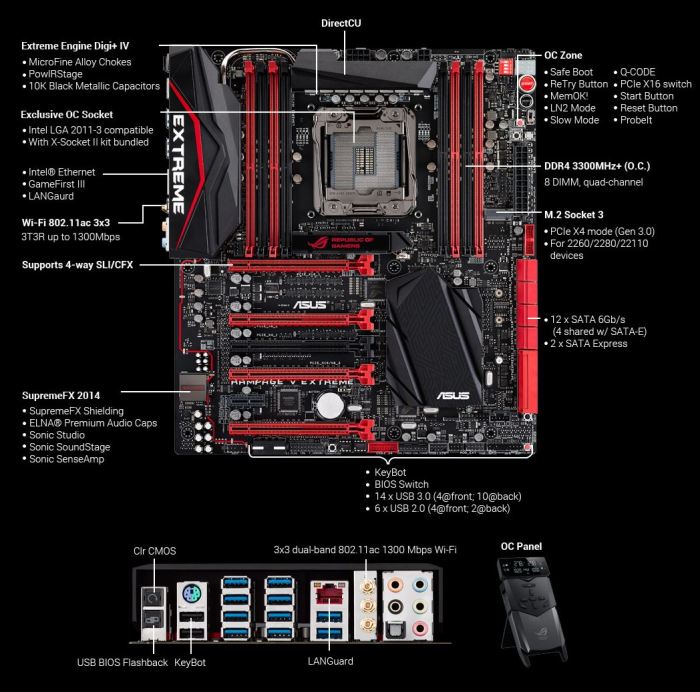
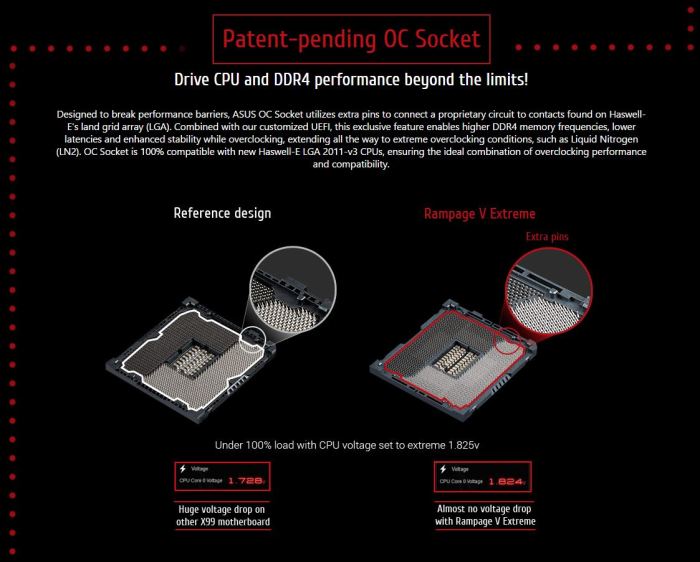
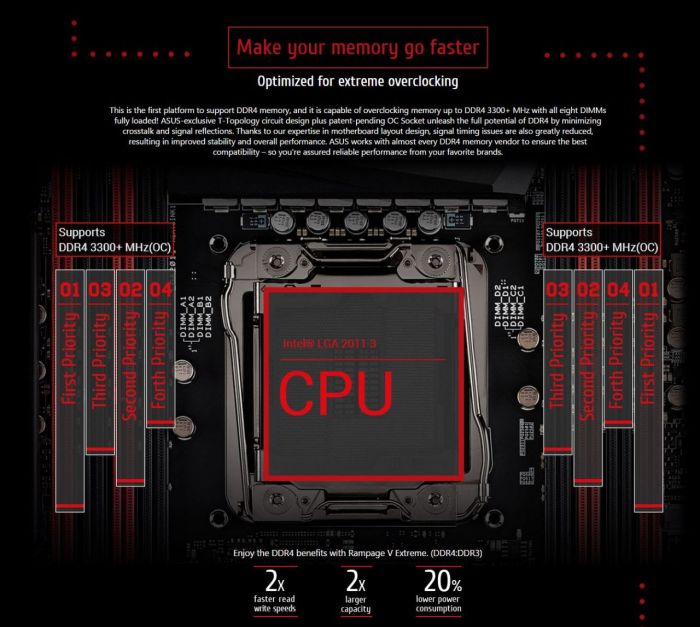
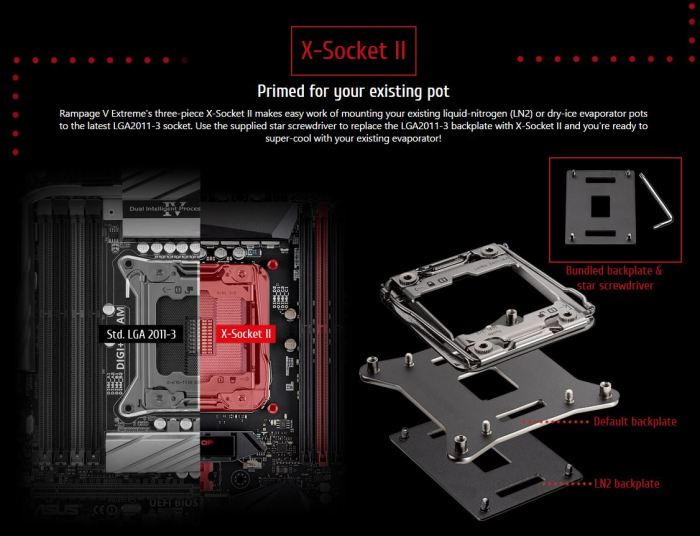

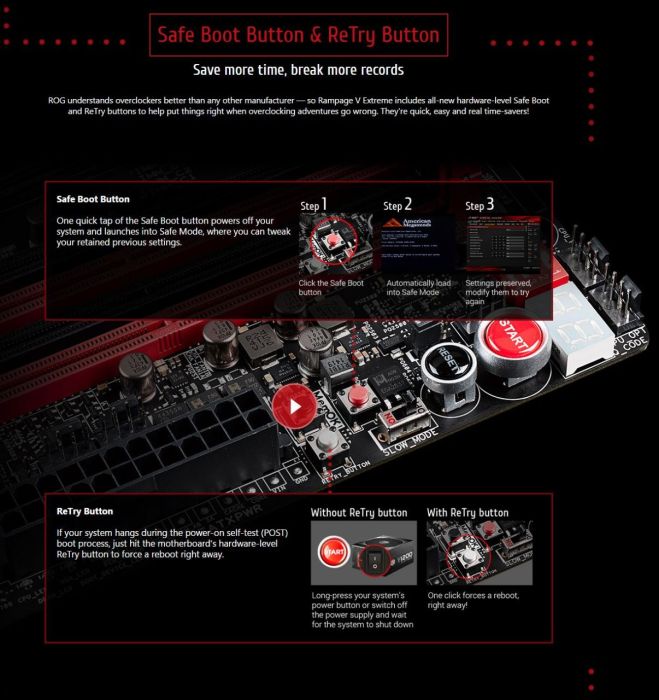
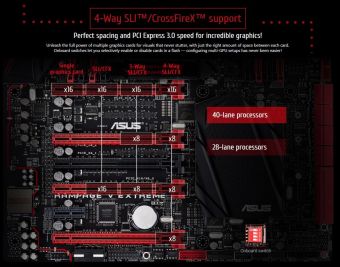


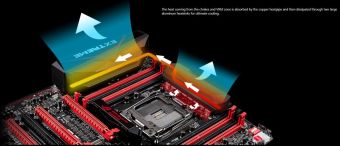
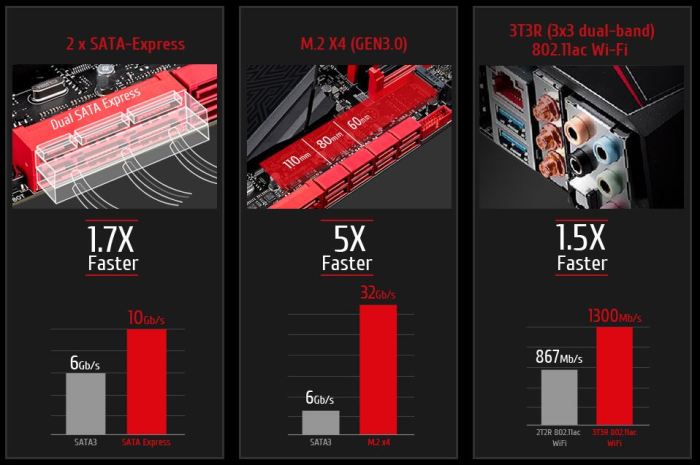
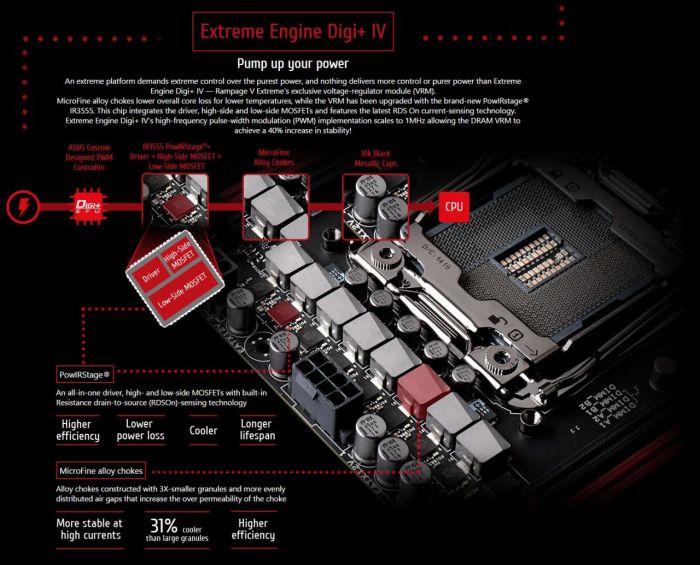
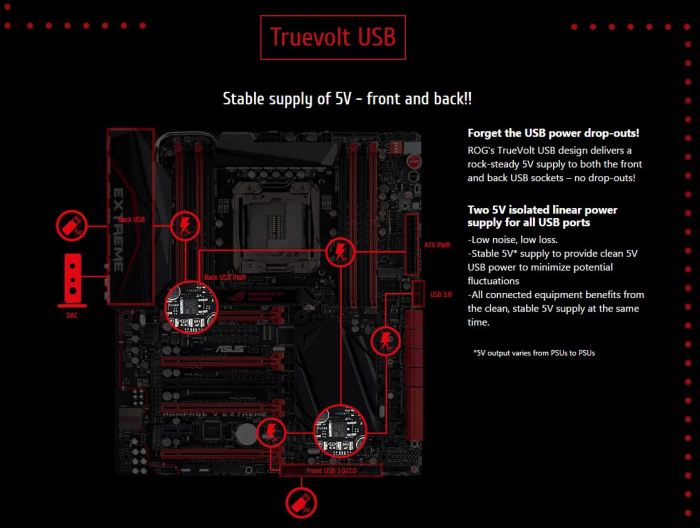
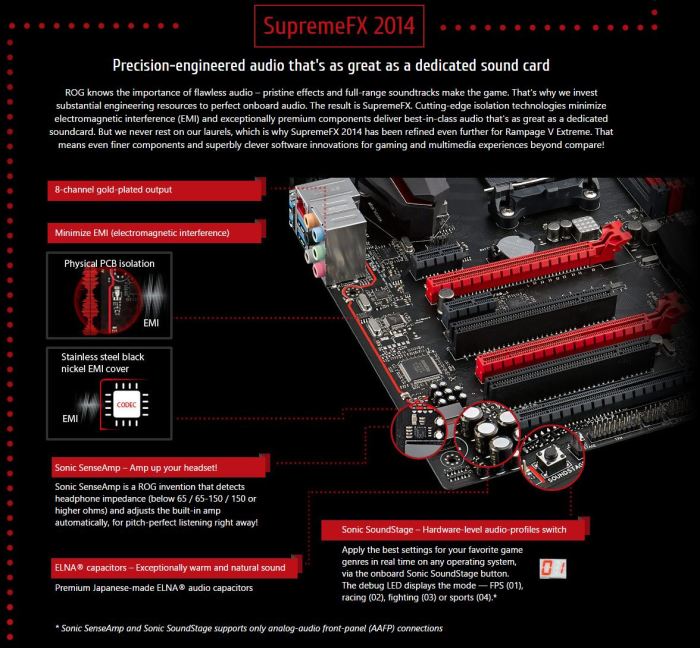
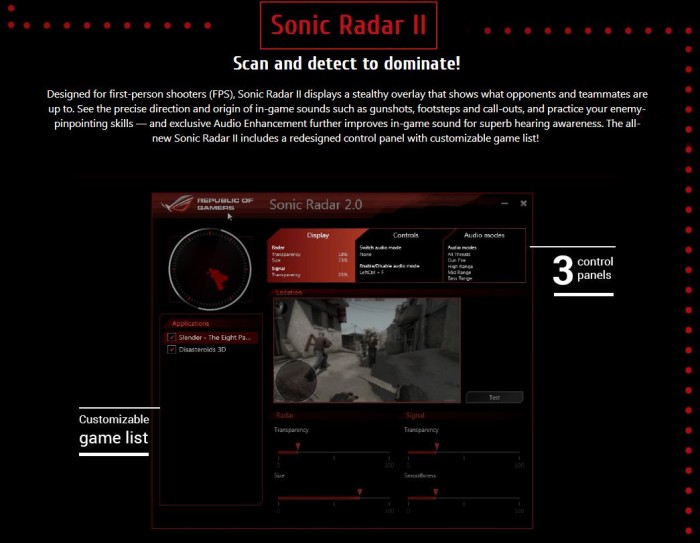
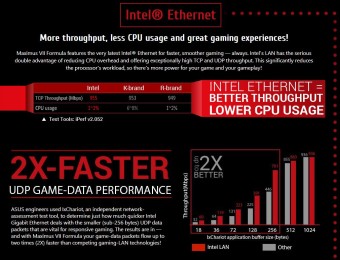
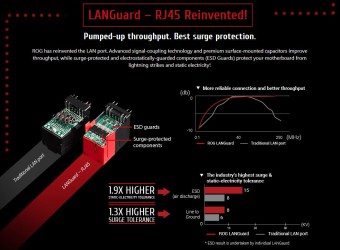
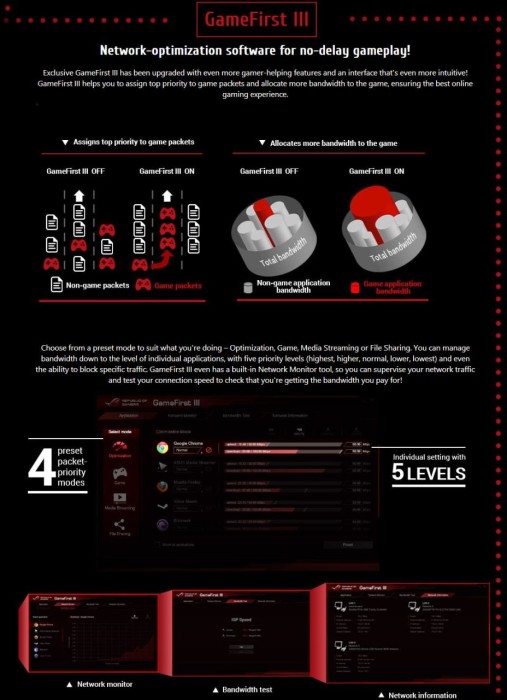
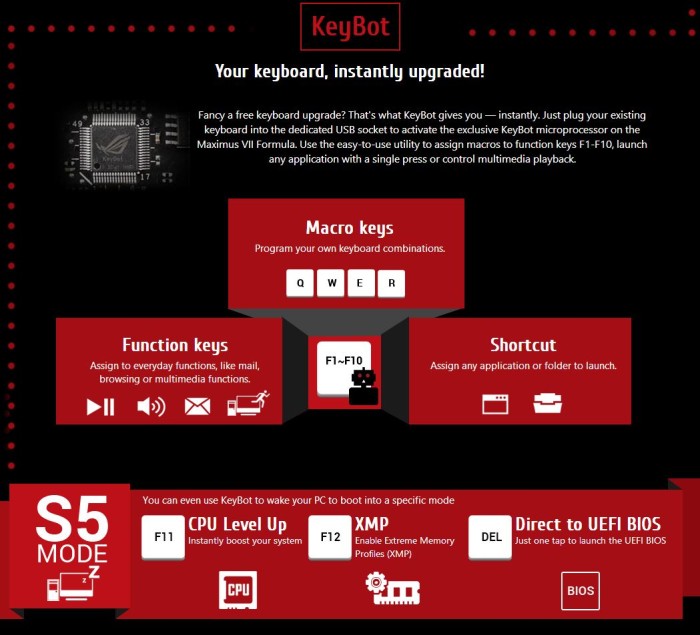
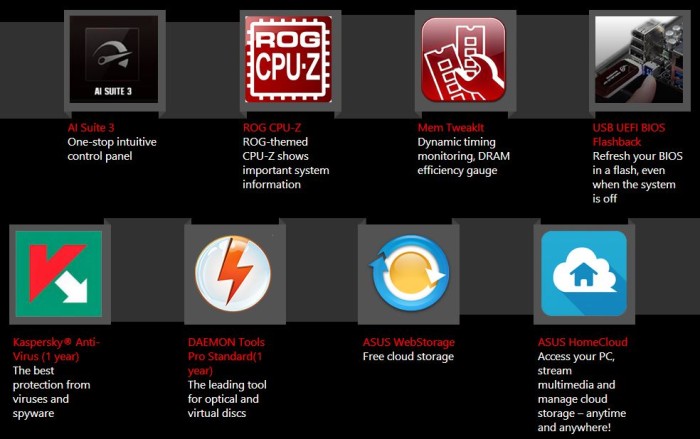
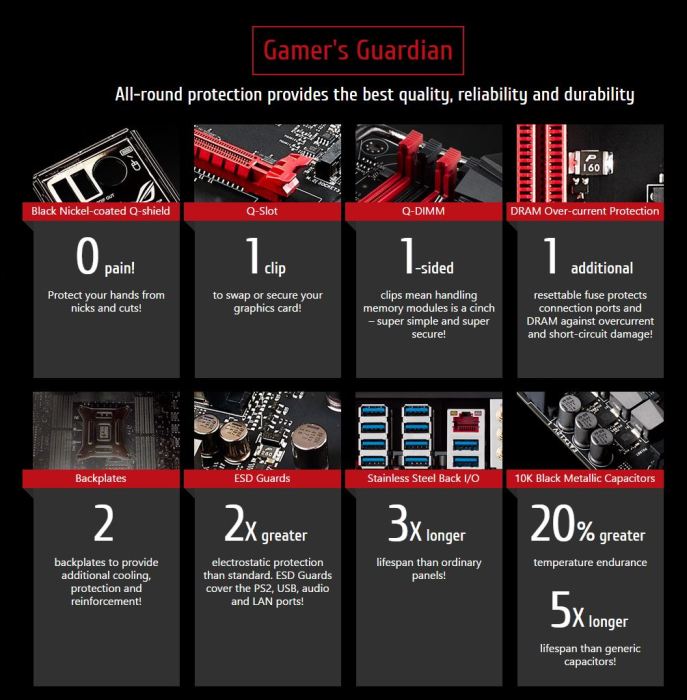
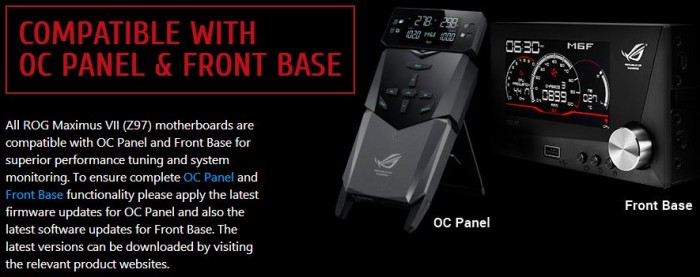
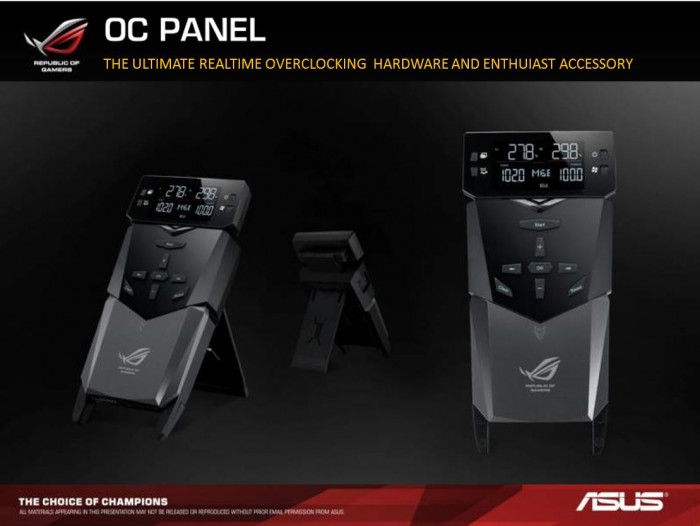
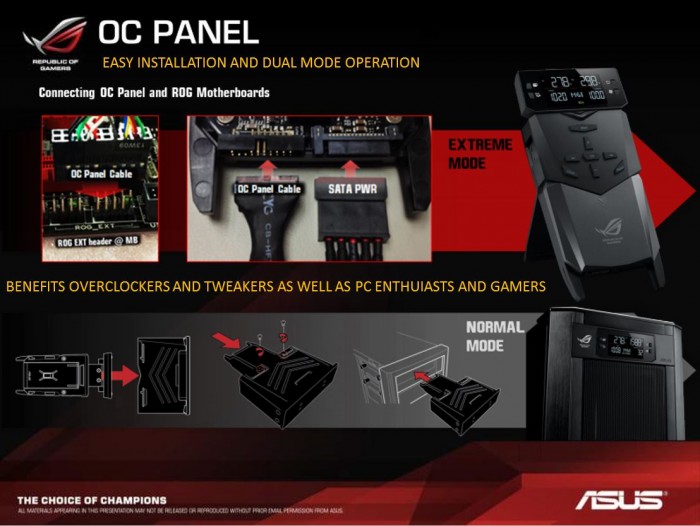
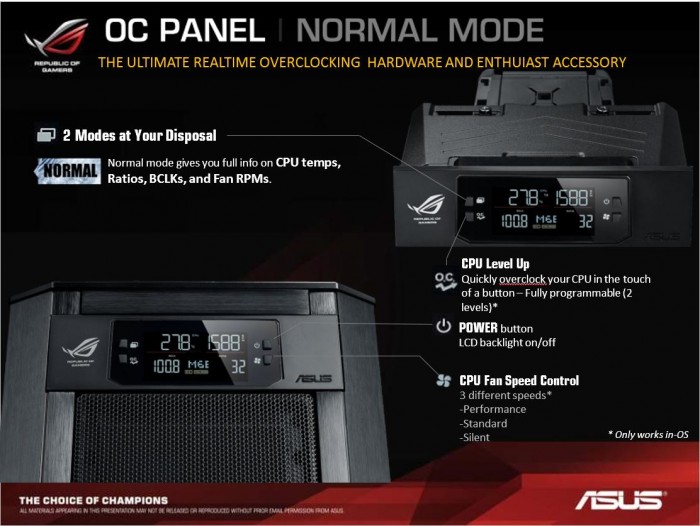

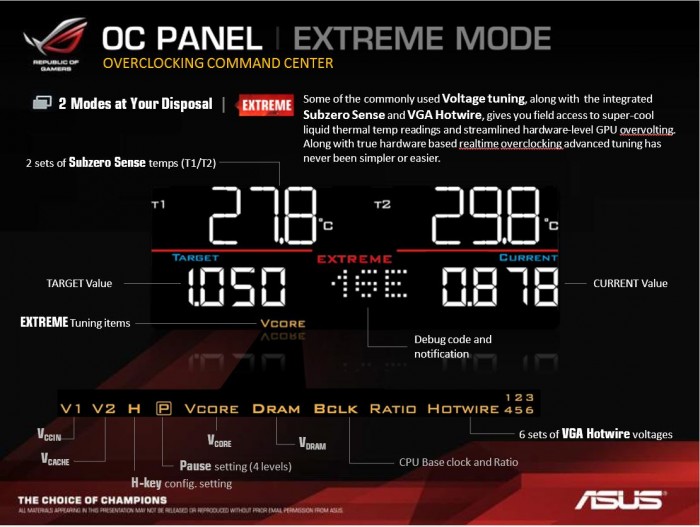

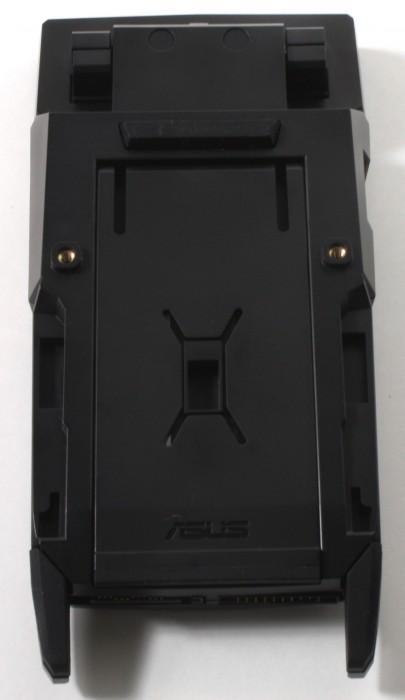

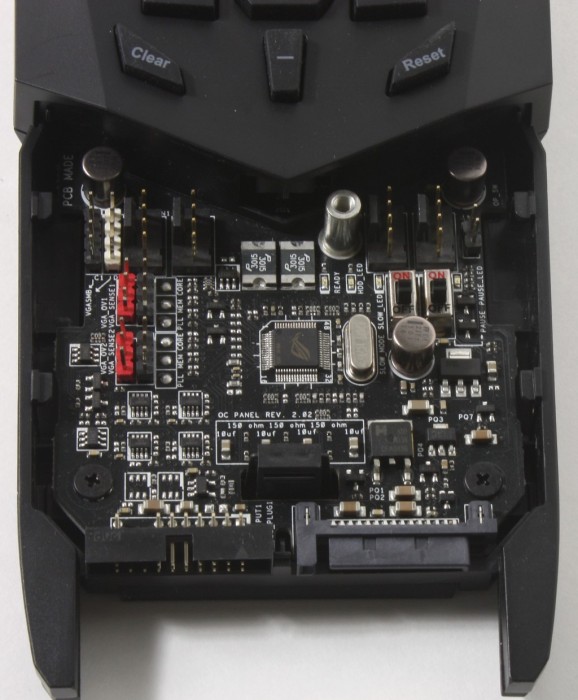

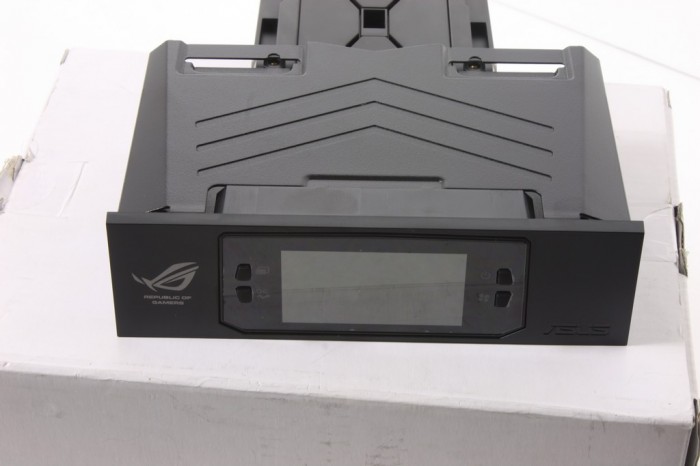
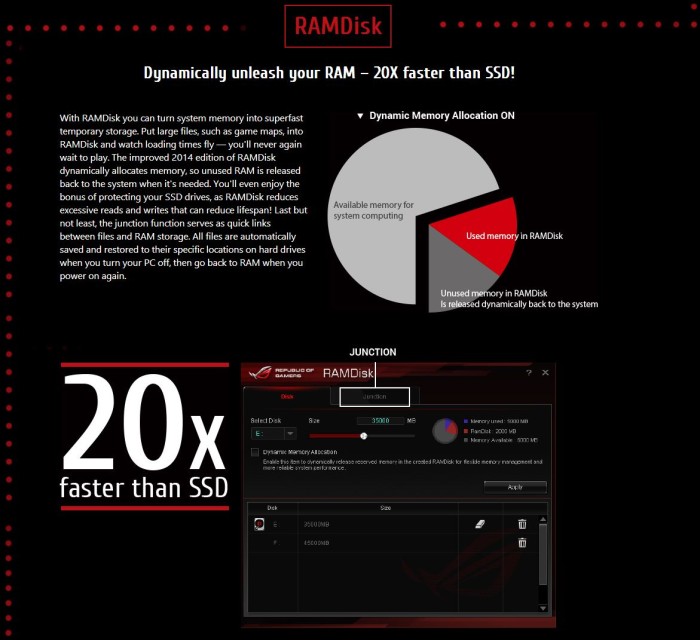
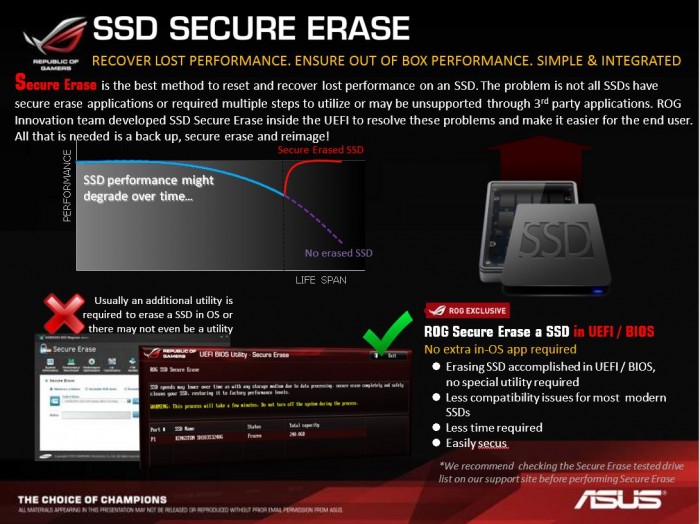
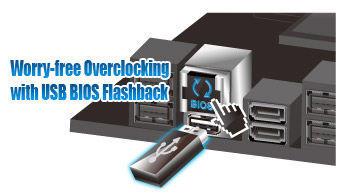


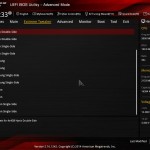








yeah